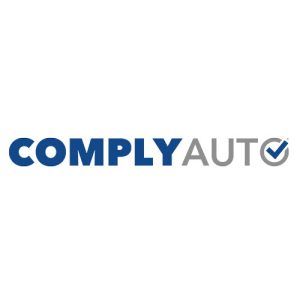According to the Department of Health and Human Services, over 2,300 total heat-related deaths occurred in 2023, which is a number that has been steadily growing. In order to tackle this issue head-on, OSHA recently issued a Notice of Proposed Rulemaking (NPRM) for rules regarding heat illness prevention in outdoor and indoor settings. To understand the complicated nature of heat illness at the federal level, we will need a short history lesson on how we got here.
Treating Heat Illness: OSHA’s General Duty Clause (GDC)
It is hard to believe that prior to the NPRM, there were no specific federal regulations specifically targeting heat illness, but that does not mean that heat-related injuries and death are not on OSHA’s radar. OSHA has been using the General Duty Clause (GDC) with surgical precision for situations like these. This GDC power is much like Section 5 of the FTC Act in that it is a broad grant of authority to target businesses/employers who subject their employees to unsafe working conditions. Specifically, the GDC states that each employer:
“… shall furnish to each of his employees … a place of employment … [that is] free from recognized hazards that are causing or are likely to cause death or serious physical harm to his employees.”
The GDC, and its broad interpretation, has been both OSHA’s guide and guillotine for almost 55 years and has allowed it to penalize employers across multiple industries for infractions that jeopardize the health and safety of its employees. Heat illness is no different. Regardless of the presence of a final specific regulation, employers cannot subject their employees to unsafe working conditions, and this includes weather-related protections.
OSHA’s First Attempt: The National Emphasis Program (NEP)
In 2022, OSHA established the National Emphasis Program (NEP) related to indoor and outdoor heat-related illnesses and injuries. Viewed as a precursor for legislation by some, NEPs are a result of OSHA’s aggregation of copious amounts of injury and illness data and National Institute for Occupational Safety and Health (NIOSH) reports to determine whether more emphasis is needed to be placed on a particular hazard. Including the heat hazard, there are 13 NEPs that cover many unrelated topics spanning from COVID-19 and crystalline silica to combustible dust and lead. OSHA found that the growing number of preventable heat-related injuries and illnesses necessitated an NEP. Since the heat NEP’s inception, OSHA has used it to conduct over 5,000 federal heat-related inspections, and it remains effective until April 2025. If OSHA were to pass its heat illness prevention regulations, then it would become effective after this date.
“New Rule, Who ‘Dis?”
(Leave it up to me to make a callback to a meme that was made popular in 2014, but it was just too good to pass up.)
If finalized, the NPRM regulations would require businesses to implement measures throughout their operations to protect their employees from extreme heat in both indoor and outdoor applications. We are still months away, but here is a quick look at what these proposed regulations entail.
Application
Rather than saying what businesses these regulations apply to, OSHA wrote in the alternative and identified the businesses/situations in which these regulations do not apply:
- Work activities for which there is no reasonable expectation of exposure;
- Short duration employee exposures in any period between 15 minutes and 60 minutes;
- Emergency response organizations (firefighting, medical services, technical search and rescue, or other specific emergency response activities);
- Work activities performed in indoor work areas or vehicles where air-conditioning keeps the ambient temperature below 80 degrees Fahrenheit;
- Telework; and
- Sedentary work activities in indoor work areas that only involve sitting, occasional standing and walking, and occasional lifting of weights less than 10 pounds.
Heat Injury and Illness Prevention Plan
Employers must develop and implement a work site heat injury and illness prevention plan (Plan) with site-specific information, which, among other things, includes the following:
- A comprehensive list of the types of work activities covered by the plan;
- All policies and procedures necessary to comply with these requirements; and
- An identification of the heat index or some other metric the employer will monitor to comply with this regulation.
The Plan must be evaluated for its effectiveness and updated either annually or whenever a heat-related illness or injury results in death, days away from work, medical treatment beyond first aid or loss of consciousness, whichever occurs first. It also must be readily available at the work site to all employees and available in a language each employee understands.
Roles
The employer must designate one or more heat safety coordinators to implement and monitor the Plan. Additionally, the employer must seek the input and involvement of non-managerial employees in the development and implementation of the Plan.
Responsibilities
The employer must regularly monitor heat conditions in outdoor work areas and, at indoor sites, must identify each work area where there is a reasonable expectation that employees are or may be exposed to heat at or above the initial heat trigger of 80 degrees Fahrenheit. Once the initial heat trigger is reached, the employer must implement controls, such as providing drinking water in specific locations, establishing break areas at outdoor and indoor work sites with adequate shade or air-conditioning, implementing rest breaks, and providing adequate cooling personal protection equipment (PPE). If employees are exposed to a high heat trigger (90 degrees Fahrenheit), then other requirements are necessary.
The employer must also establish heat illness and emergency response procedures, which include a list of emergency phone numbers, contact information of designated individuals, descriptions of how to transport employees to places where they can be reached by emergency personnel, clear directions to the work site to be provided to emergency dispatchers, and procedures for responding to an employee experiencing signs and symptoms of heat-related illness.
For a more comprehensive understanding of the regulation, click the link below to review the official text.
https://www.osha.gov/sites/default/files/Heat-NPRM-Final-Reg-Text.pdf
As noted previously, the OSHA proposal is just that — a proposal — so stay tuned. The details previously mentioned could change from those proposed, but some form of a final rule is likely, so you should prepare now. ComplyAuto will continue to monitor this regulation and keep you posted on any significant changes.
Remember also that few states (California, Oregon and others on the way) have their own heat-illness-related regulations. California’s requirements are extensive, but ComplyAuto has you covered. Soon, we will offer the following to help you comply with these heat illness prevention regulations:
- Heat Illness Prevention Plan.
- Supervisor and Non-Supervisor Employee Heat Illness Training.
- Temperature Measurement and Recordkeeping.
- Cool-Down Area Questionnaires.
ComplyAuto Resources
It is now more important than ever to stay on top of heat‑related issues at your dealership. In addition to the state‑specific resources outlined above, ComplyAuto currently has heat stress and heat-related injury and illness prevention training courses and heat illness prevention plans available to ensure a safe workplace environment.
With the summer season upon us, we highly encourage you to enroll your staff in these courses to help them understand the symptoms of heat stress (they are subtle!) and how to safely manage their activities when the heat turns up.
Questions?
If you have any questions, please reach out to your dedicated client success manager to learn more or send us an inquiry at info@complyauto.com.









